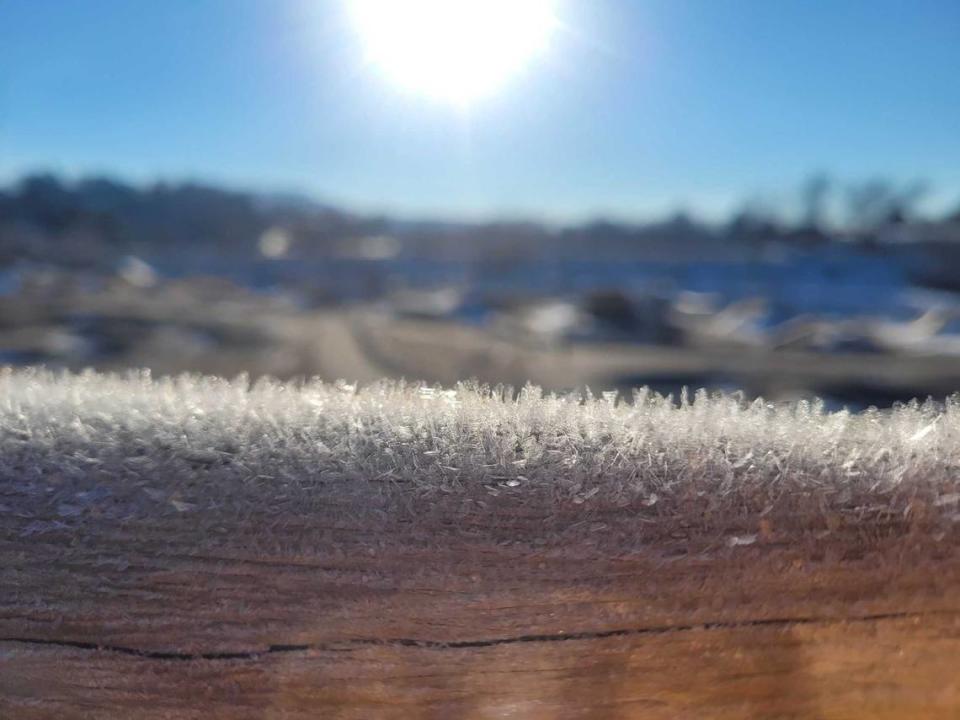Did you notice that ice that looks like little feathers, Boise? This is how it forms
Have you ever noticed on a cold winter morning those weird-looking ice structures along a fence or a tree branch that resemble little bird feathers?
No, you’re not tucked up in bed dreaming about a winter wonderland. Those icicles are very much real, and they often happen in the Pacific Northwest, Mountain West and Upper Midwest — as they did this morning in the Boise area.
It’s called rime ice, or hoarfrost, according to Idaho News 6 (KIVI-TV) chief meteorologist Scott Dorval, and it forms on cold, still mornings when there are tiny droplets of moisture in the air, creating fog or a mist. When that moisture comes into contact with a solid object, like a fence, bench or tree branch, it freezes rapidly.
Rime ice is oftentimes opaque because it freezes so quickly, trapping air inside and giving a whiter, foggy appearance.

The ice becomes a feather-like structure because the water droplets are so tiny that they float through the air and attach to one another when freezing, creating an unusual formation.
In the most extreme cases, such as at Mount Washington in New Hampshire, huge chunks of rime ice can freeze on meteorological equipment, requiring scientists to snap those off in order for their equipment to function.
Fortunately, down in the Treasure Valley, we get to admire rime ice on a much smaller scale.

 Yahoo Movies
Yahoo Movies 
